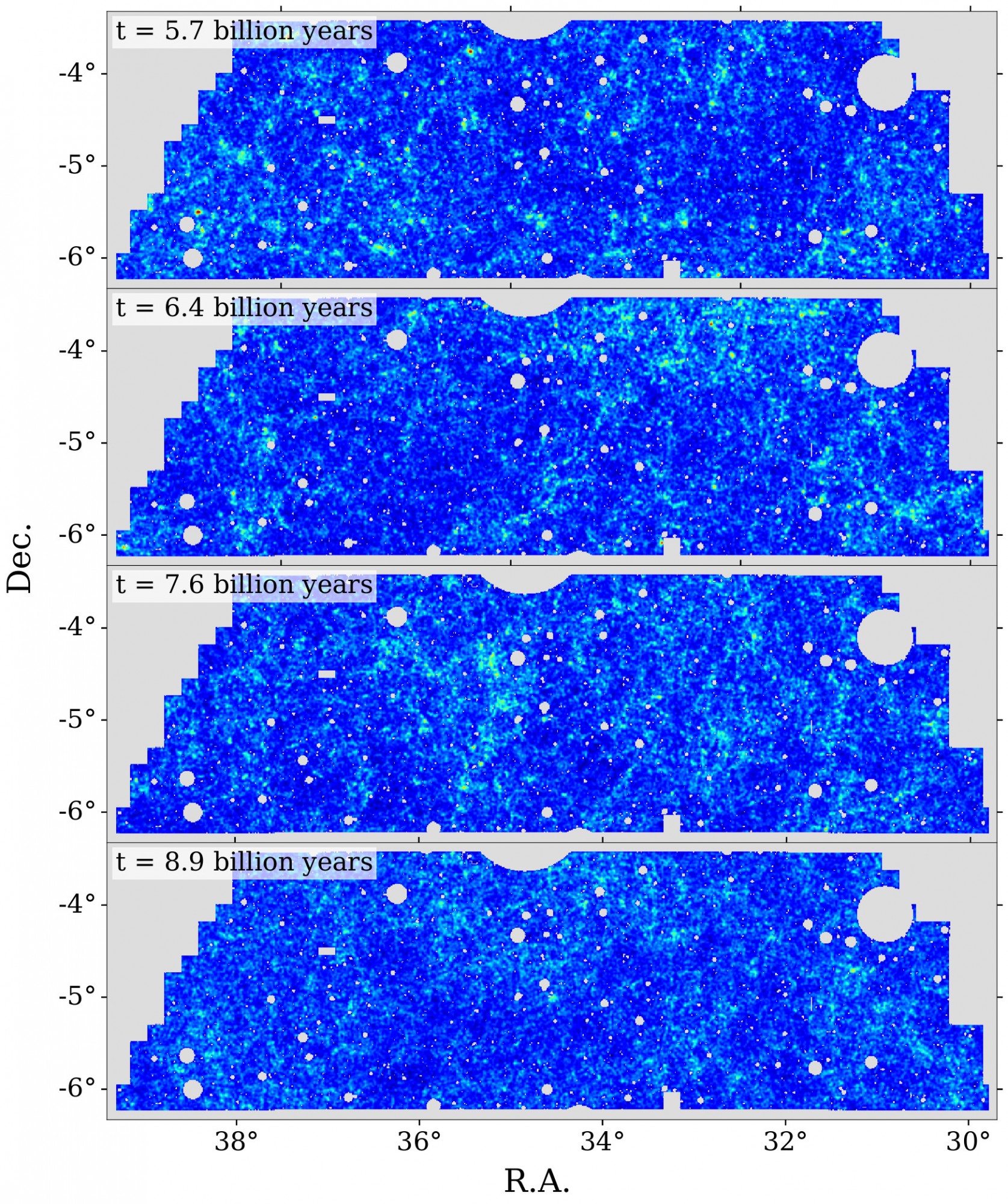A trailer for LSST's view of the Universe
The LSST telescope will be able to make a comprehensive map of the largest structures in the Universe across cosmic time, spanning a period of about ten billion years. But the objective of this tremendous task will not be purely cartographic: these data will allow us to study the properties of Dark Energy, the driving force behind the accelerated expansion of the Universe, which has a strong impact on the efficiency with which large structures can grow in density. Precursor galaxy surveys, such as the Subaru Hyper Suprime-Cam (HSC), are currently carrying out similar measurements on a smaller scale, and they allow us to view a "teaser trailer" of what LSST will be able to achieve. Recently, a team of researchers within the Dark Energy Science Collaboration (DESC) of LSST, led by Andrina Nicola (Princeton University), David Alonso (University of Oxford), Javier Sanchez (U.C. Irvine) and Anže Slosar (Brookhaven National Laboratory), have used the positions of around 20 million galaxies targeted by the first data release of HSC to reconstruct their density as a function of time (see Figure 1). Through a statistical analysis, they were then able to use these data to determine the relation between the structures mapped by the galaxy density, and the underlying matter density field. About 80% of the latter is made up of "dark matter", another mysterious substance that cannot be directly detected with our telescopes. This study was carried out entirely making use of data analysis methods and tools build within the LSST DESC.

Figure 1: The distribution of large-scale structures as mapped by the galaxies observed by the Subaru Hyper Suprime-Cam survey at three different cosmic epochs, between 5.7 and 8.9 billion years ago. The distribution and growth of these structures are powerful probes of the physics of Dark Energy, the driving force behind the accelerated expansion of the Universe. The physical scale of the structures mapped here is truly outstanding: although these maps are shown in celestial coordinates, each panel spans a physical distance of the order of 2 billion lightyears in the horizontal direction. (Credit: Nicola et al 2019)